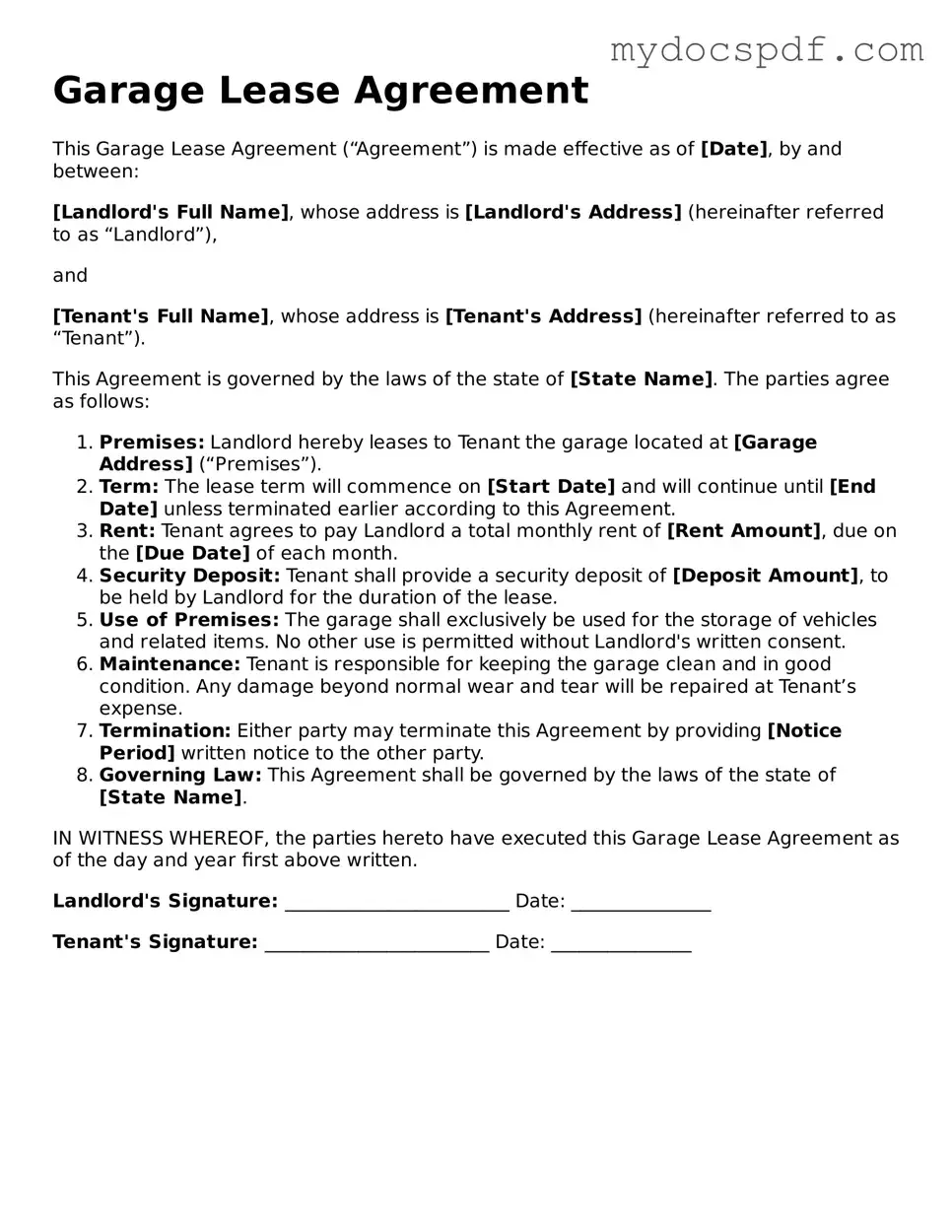Garage Lease Agreement
This Garage Lease Agreement (“Agreement”) is made effective as of [Date], by and between:
[Landlord's Full Name], whose address is [Landlord's Address] (hereinafter referred to as “Landlord”),
and
[Tenant's Full Name], whose address is [Tenant's Address] (hereinafter referred to as “Tenant”).
This Agreement is governed by the laws of the state of [State Name]. The parties agree as follows:
- Premises: Landlord hereby leases to Tenant the garage located at [Garage Address] (“Premises”).
- Term: The lease term will commence on [Start Date] and will continue until [End Date] unless terminated earlier according to this Agreement.
- Rent: Tenant agrees to pay Landlord a total monthly rent of [Rent Amount], due on the [Due Date] of each month.
- Security Deposit: Tenant shall provide a security deposit of [Deposit Amount], to be held by Landlord for the duration of the lease.
- Use of Premises: The garage shall exclusively be used for the storage of vehicles and related items. No other use is permitted without Landlord's written consent.
- Maintenance: Tenant is responsible for keeping the garage clean and in good condition. Any damage beyond normal wear and tear will be repaired at Tenant’s expense.
- Termination: Either party may terminate this Agreement by providing [Notice Period] written notice to the other party.
- Governing Law: This Agreement shall be governed by the laws of the state of [State Name].
IN WITNESS WHEREOF, the parties hereto have executed this Garage Lease Agreement as of the day and year first above written.
Landlord's Signature: ________________________ Date: _______________
Tenant's Signature: ________________________ Date: _______________
